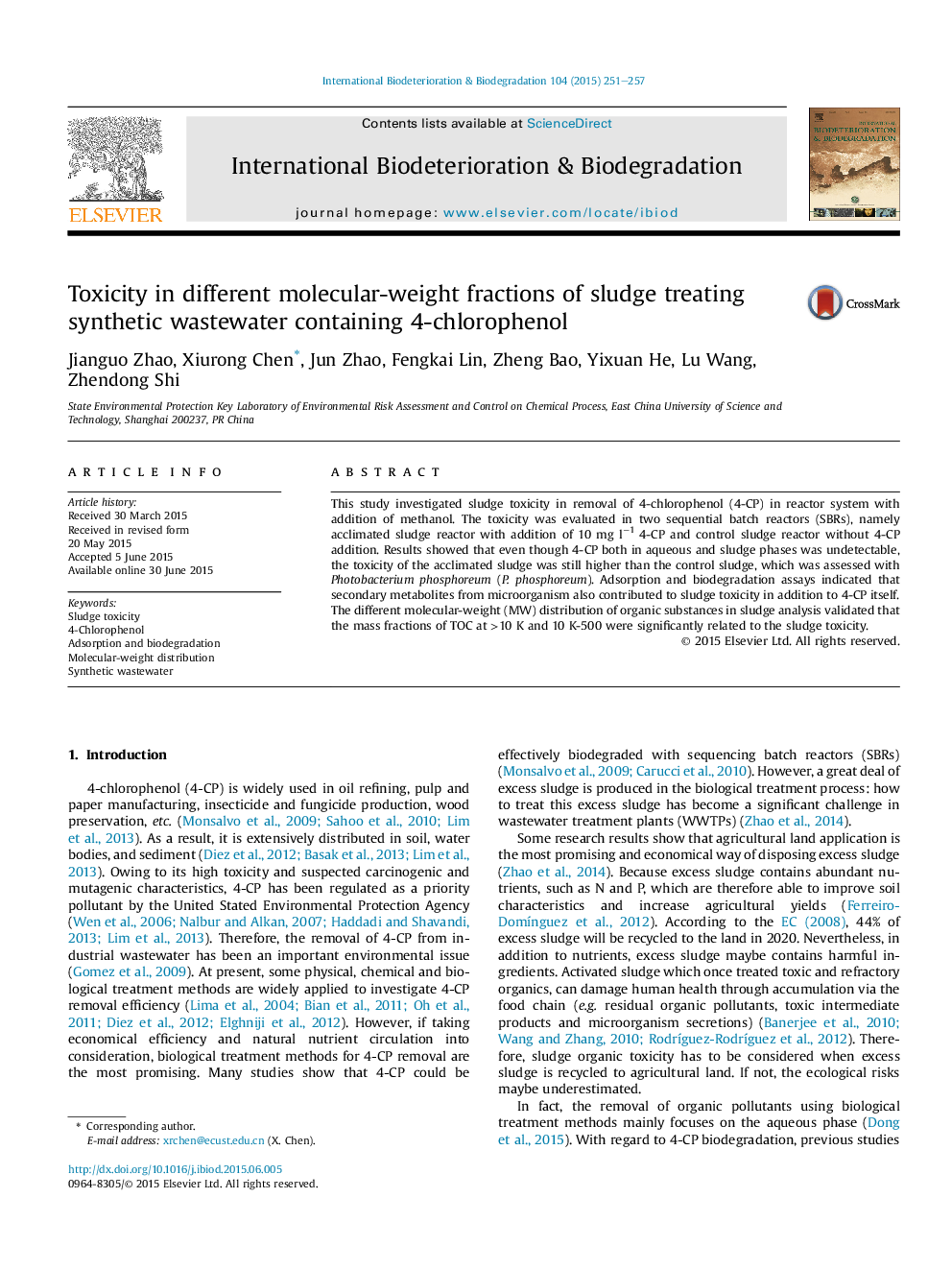| Article ID | Journal | Published Year | Pages | File Type |
|---|---|---|---|---|
| 4364487 | International Biodeterioration & Biodegradation | 2015 | 7 Pages |
•The toxicity of acclimated sludge using 4-chlorophenol exceeded non-acclimated sludge.•The sludge toxicity was investigated through adsorption and biodegradation assays.•The sludge toxicity was caused by secondary metabolites in addition to 4-chlorophenol.•The sludge toxicity was related to the mass fraction of organic matters in sludge.
This study investigated sludge toxicity in removal of 4-chlorophenol (4-CP) in reactor system with addition of methanol. The toxicity was evaluated in two sequential batch reactors (SBRs), namely acclimated sludge reactor with addition of 10 mg l−1 4-CP and control sludge reactor without 4-CP addition. Results showed that even though 4-CP both in aqueous and sludge phases was undetectable, the toxicity of the acclimated sludge was still higher than the control sludge, which was assessed with Photobacterium phosphoreum (P. phosphoreum). Adsorption and biodegradation assays indicated that secondary metabolites from microorganism also contributed to sludge toxicity in addition to 4-CP itself. The different molecular-weight (MW) distribution of organic substances in sludge analysis validated that the mass fractions of TOC at >10 K and 10 K-500 were significantly related to the sludge toxicity.
